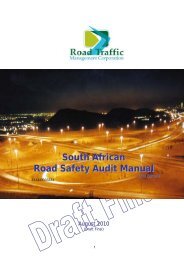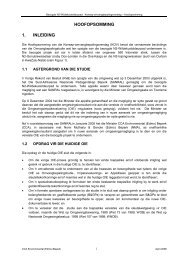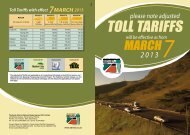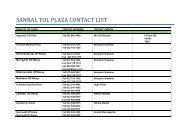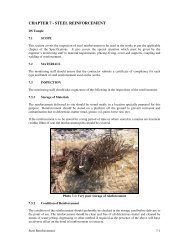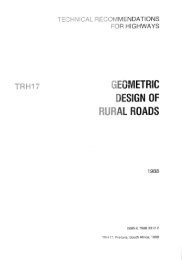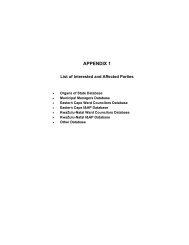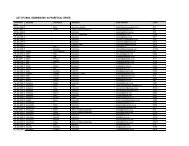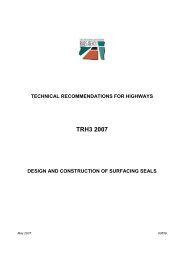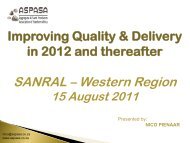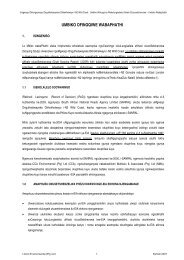SAPEM Chapter 2 - Sanral
SAPEM Chapter 2 - Sanral
SAPEM Chapter 2 - Sanral
You also want an ePaper? Increase the reach of your titles
YUMPU automatically turns print PDFs into web optimized ePapers that Google loves.
South African Pavement Engineering Manual<br />
<strong>Chapter</strong> 2: Pavement Composition and Behaviour<br />
11. CLIMATE<br />
Climate is a critical consideration for pavement engineering as it has a significant influence on construction,<br />
pavement behaviour and performance. Climate has two primary components:<br />
Temperature, which effects include:<br />
Cracking<br />
Permanent deformation<br />
Warping<br />
Curling<br />
Moisture in the Pavement<br />
Evaporation<br />
Weathering<br />
Speed of reactions<br />
Drying out of materials<br />
Ageing<br />
Moisture, which influences:<br />
Permeability<br />
Drainage<br />
Safety<br />
Material strength<br />
Material selection<br />
The primary consideration in<br />
pavement design and maintenance is<br />
keeping water out of the pavement.<br />
For example, in a wet region, materials are selected that are more resistant to moisture damage. Subgrades will<br />
generally have higher moisture contents in wetter areas, provide less bearing capacity, requiring a thicker pavement<br />
structure and highlight the need for good drainage systems. In addition, climate considerations also need to be<br />
taken into account during construction. For example, the prediction of material moisture contents for compaction,<br />
and asphalt temperature loss during laying and compaction.<br />
The South African Weather Service (SAWS) collects and keeps temperature and rainfall data at many weather<br />
stations across South Africa. These can be purchased through the SAWS webstore: www.weathersa.co.za.<br />
Temperature maps for South Africa, which, for example, show the minimum and maximum design temperatures for<br />
asphalt are shown in Figure 32 and Figure 33 (O’Connell, 2012). Macroclimatic zone indicators, such as shown for<br />
Thornthwaite’s Moisture Index in Figure 31, are also useful (Thornthwaite, 1948; Paige-Green, 2012). Climatic<br />
considerations are addressed in <strong>Chapter</strong> 10, Section 3.6, and <strong>Chapter</strong>s 9, 12 and 13.<br />
Figure 31. Thornthwaite’s Moisture Index for Southern Africa<br />
Section 11: Climate<br />
Page 33



